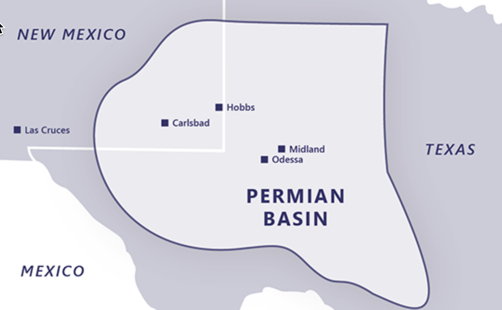As President-elect Donald Trump advocates for a renewed push in U.S. oil production, the dynamics of the shale industry have significantly evolved since his first term. Gone are the days of wildcatters driving breakneck drilling activity. In their place stand oil giants focused on capital discipline, efficiency, and delivering returns to investors.
This shift is reshaping the future of U.S. shale production, particularly in the Permian Basin, the country’s largest oil field, and presents both challenges and opportunities for the industry.

The Rise of Oil Giants in the Permian Basin
The Permian Basin of West Texas and New Mexico has long been the epicenter of U.S. shale production. A decade ago, small, aggressive exploration companies known as wildcatters dominated the region. These companies were responsible for much of the initial shale boom, deploying new drilling techniques and hydraulic fracturing to unlock vast reserves of oil and gas.
Today, the landscape looks very different. Three major oil producers — Exxon Mobil, Diamondback Energy, and Occidental Petroleum — now control a significant share of the Permian’s output. This consolidation has turned the basin into a “giant factory” focused on efficiency rather than explosive growth.
In December, Exxon finalized a $60 billion acquisition of Pioneer Natural Resources, further solidifying its position as a dominant player in the Permian. Diamondback Energy, another key player, acquired Endeavor Energy Resources for $26 billion, marking one of the largest deals in recent years.
Disappearing Wildcatters
The disappearance of wildcatters is a telltale sign of shale’s maturation. During the early days of the shale revolution, private drilling companies thrived by taking on high-risk ventures and ramping up production whenever crude prices spiked.
However, private firms now operate only 25% of rigs in the Permian, down from about 50% in January 2022, according to Rob Wilson of East Daley Analytics. Many of these companies have been acquired by larger, publicly traded firms, leaving fewer players willing or able to rapidly increase supply in response to higher prices.
Efficiency Over Growth
While U.S. crude production reached a record 13 million barrels per day under President Biden, future growth is expected to slow. JPMorgan Chase forecasts a modest 3.6% increase in U.S. crude output by 2030, compared to the double-digit growth seen in previous years.
Rather than drilling more wells, companies are focused on maximizing output from existing fields.
Diamondback Energy’s President Kaes Van’t Hof explained, “We’ve been drilling 300 wells a year here for eight years. We better get better at what we do.” This sentiment reflects the broader industry trend of prioritizing productivity improvements over aggressive expansion.
Challenges Facing the Shale Industry
Several challenges are contributing to the industry’s shift toward efficiency:
- Geologic Limits: Many U.S. shale fields are maturing, and the so-called “sweet spots” are dwindling. This makes it more difficult to achieve production gains without significant technological breakthroughs.
- Infrastructure Constraints: Drilling operations are increasingly constrained by limited power grid capacity and the challenge of managing wastewater disposal, a byproduct of oil production.
- Declining Output in Other Basins: Other key shale regions, including the Eagle Ford Shale in Texas, the Williston Basin in North Dakota, and the DJ Basin in Colorado, have seen declining production or are expected to roll over in the coming years.
The Push for Productivity and Technological Innovation
Despite these challenges, the U.S. shale industry continues to improve its productivity. Advances in drilling technology and automation allow companies to do more with fewer employees. This rising productivity means fewer rigs and workers are needed to sustain current output levels.
However, the focus on capital discipline and efficiency is reshaping the workforce. Many industry executives expect the sector to contract further, with fewer companies operating in the space.
What Does the Future Hold for U.S. Shale?
The days of breakneck growth in the U.S. shale industry are likely behind us. The focus has shifted to capital efficiency, technological innovation, and returning cash to investors. The consolidation of the Permian Basin is a clear indication that the industry is maturing.
Yet, opportunities remain. The big players, like Exxon Mobil, Diamondback Energy, and Occidental Petroleum, are well-positioned to thrive in this new environment by leveraging their scale and expertise to maximize returns.
While the Permian Basin will continue to be the backbone of U.S. oil production, the industry’s future growth will depend on its ability to overcome geologic and infrastructure challenges through innovation and strategic investments.
For now, U.S. shale is no longer a wild frontier. It’s a well-oiled machine focused on sustainable production and long-term value creation.
Are you keeping up with the latest oil and gas industry trends? Stay informed with Oilgasleads.com for regular updates on drilling, pipeline, and facility projects across North America.
For more insights on business development and digital advertising opportunities in the oil and gas sector, contact us today!






